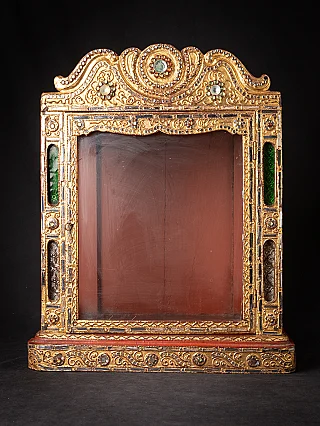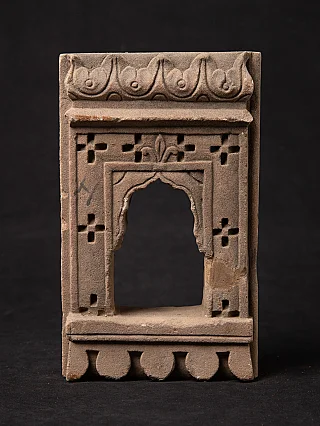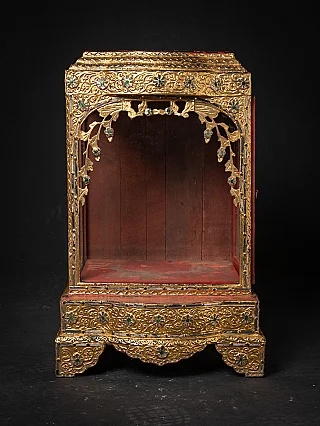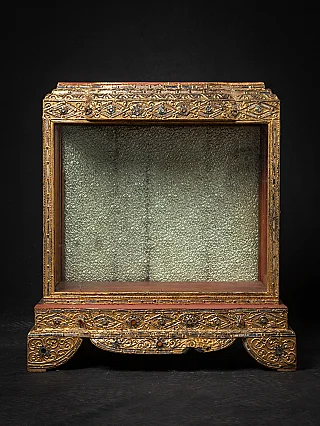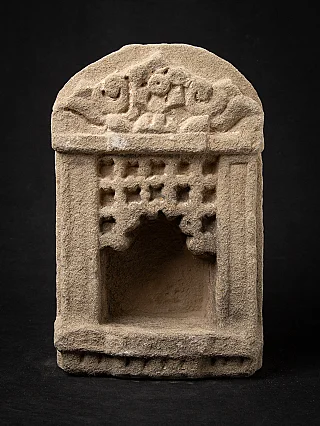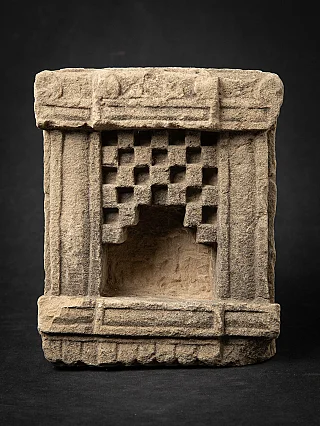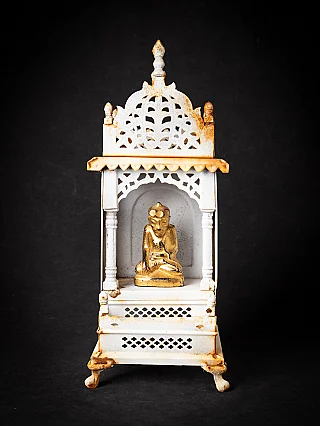Boudha Stupa, Nepal
Author : Peter Vredeveld

Boudha Stupa (Boudhanath) in Kathmandu - Nepal, by sunset
Boudha Stupa, also known as Boudhanath, Khasti Chaitya and Khsa Chaitya, stands as an architectural wonder and a spiritual icon in the heart of Kathmandu, Nepal. Nestled approximately 11 kilometers to the northeast of the city center, this massive stupa boasts a mandala design that ranks it among the largest spherical stupas in Nepal and across the globe.
A Stupa of Historical Significance

The rich history of Boudha Stupa finds its roots in the deep layers of Nepalese and Tibetan traditions. Believed to enshrine the sacred relics of Kassapa Buddha, the stupa's importance transcends borders. It is strategically located on the ancient trade route from Tibet, where travelers would enter the Kathmandu Valley via the village of Sankhu in the northeast corner, then continue toward the smaller Chabahil Stupa, also known as "Little Boudhanath." From there, it crosses the Bagmati River into Lalitpur, bypassing the main city of Kathmandu.
The Eyes of Buddha and Beyond
One of the most iconic features of Boudha Stupa is the captivating Eyes of Buddha, which adorn its imposing structure. These eyes, painted on all four sides of the stupa, are often described as inscrutable, impassive, empathetic, and shrewd. They gaze out in the four cardinal directions, observing the world and conveying a profound sense of wisdom and compassion.
A Gathering Place for Tibetan Merchants and Refugees
Tibetan merchants have long considered Boudha Stupa a place of respite and devotion. This connection gained further significance following the 1959 Tibetan uprising, which led to a substantial influx of Tibetan refugees into Nepal. Many of them settled around Boudhanath, resulting in the construction of over 50 gompas (Buddhist monasteries) in the vicinity.
A UNESCO World Heritage Site

In 1979, Boudha Stupa earned the distinguished title of a UNESCO World Heritage Site, solidifying its global significance. Alongside Swayambhu, Boudhanath attracts numerous tourists and pilgrims, cementing its position as one of the most visited sites in the Kathmandu area.
Mythological Origins: Multiple Narratives
The history and mythology surrounding the formation of Boudha Stupa are as diverse as the cultures that hold it dear. Various narratives offer insight into the stupa's mystical origins.
- Newar Buddhist Mythology: According to the Newar Buddhist history of Nepal, the area where the Narayanhiti Palace now stands was once the palace of King Vikramaditya from the Licchavi kingdom. The tale goes that King Vikramaditya ordered the construction of a traditional stone drinking fountain in the southern part of the palace courtyard. However, when the fountain failed to produce water, the king consulted astrologers. Their advice was to perform a human sacrifice with a candidate having "Battis-Lakshanas," or thirty-two perfections. Only the king and his two princes qualified, and he decided to sacrifice himself. During the ritual, the king's head flew off and landed near the Sankhu Bajrayogini Temple. The prince, filled with remorse, climbed Bajrayogini and released a chicken, intending to construct a stupa where it landed – which is the location of Boudhanath Stupa today.
The name "Khsti" was coined for this place, a fusion of Nepal Bhasa words for dew ("khas") and drops ("ti"), as people used dew droplets to quench their thirst during droughts.
- Tibetan Buddhist Mythology: In Tibetan tradition, the construction of Boudha Stupa is associated with Emperor Trisong Detsen, who is believed to have played a significant role in its development. A widow from Tibet named Jyajhima, along with her four sons, visited the Kathmandu Valley and marveled at the stupa's construction by the Newar people. This experience left a profound impact on her. She returned to Lhasa and shared stories of her time in Nepal, contributing to the stupa's significance.
A Living Monument with an Age-Old Legacy
Boudha Stupa stands as a testament to the enduring spiritual traditions and vibrant cultures of Nepal and Tibet. While time may have seen changes in the landscape, the stupa remains a symbol of devotion and reverence for those who walk its sacred grounds. Visitors can immerse themselves in the rich tapestry of history, tradition and spirituality that surrounds Boudhanath.
Two Tales, One Stupa

Tibetan Buddhist mythology offers another intriguing perspective on Boudha Stupa's creation. According to this tradition, after the demise of Kyapa Buddha, a poultry keeper and her four sons interred his remains at the site where the stupa stands today. This Tibetan woman, Jyajhima, shared her awe-inspiring experiences with Newa people who were constructing the chaitya. Her tales and fascination with Boudha led to the spread of Bhrikuti's stories in Lhasa.
The name "Khaasti" found in the local tradition reflects this history. Boudha Stupa and its surroundings hold a unique blend of cultural narratives and sacred significance, forming a vivid tapestry of spiritual exploration.
Earthquake 2015: Restoration and Resilience

The April 2015 Nepal earthquake had a profound impact on Boudhanath Stupa, causing severe damage, including a cracked spire. Extensive reconstruction efforts were undertaken. The entire structure above the dome, along with the religious relics it contained, had to be temporarily removed. The reconstruction commenced on November 3, 2015, with the ritual placement of a new central pole or "life tree" at the top of the dome. By November 22, 2016, the stupa had been restored to its former glory.
The restoration project was a collaborative effort, with funding provided by Buddhist groups and volunteers, totaling $2.1 million, including more than 30 kilograms of gold. The renovated stupa was officially inaugurated by Prime Minister Pushpa Kamal Dahal, making Boudhanath the first among the earthquake-damaged heritage sites in the Kathmandu Valley to undergo successful reconstruction.
Conclusion
Boudha Stupa, with its rich history, spiritual significance, and unwavering resilience, continues to stand as a symbol of cultural and religious unity in Nepal and an inviting destination for travelers seeking to immerse themselves in the unique tapestry of this vibrant region.
Share this page























